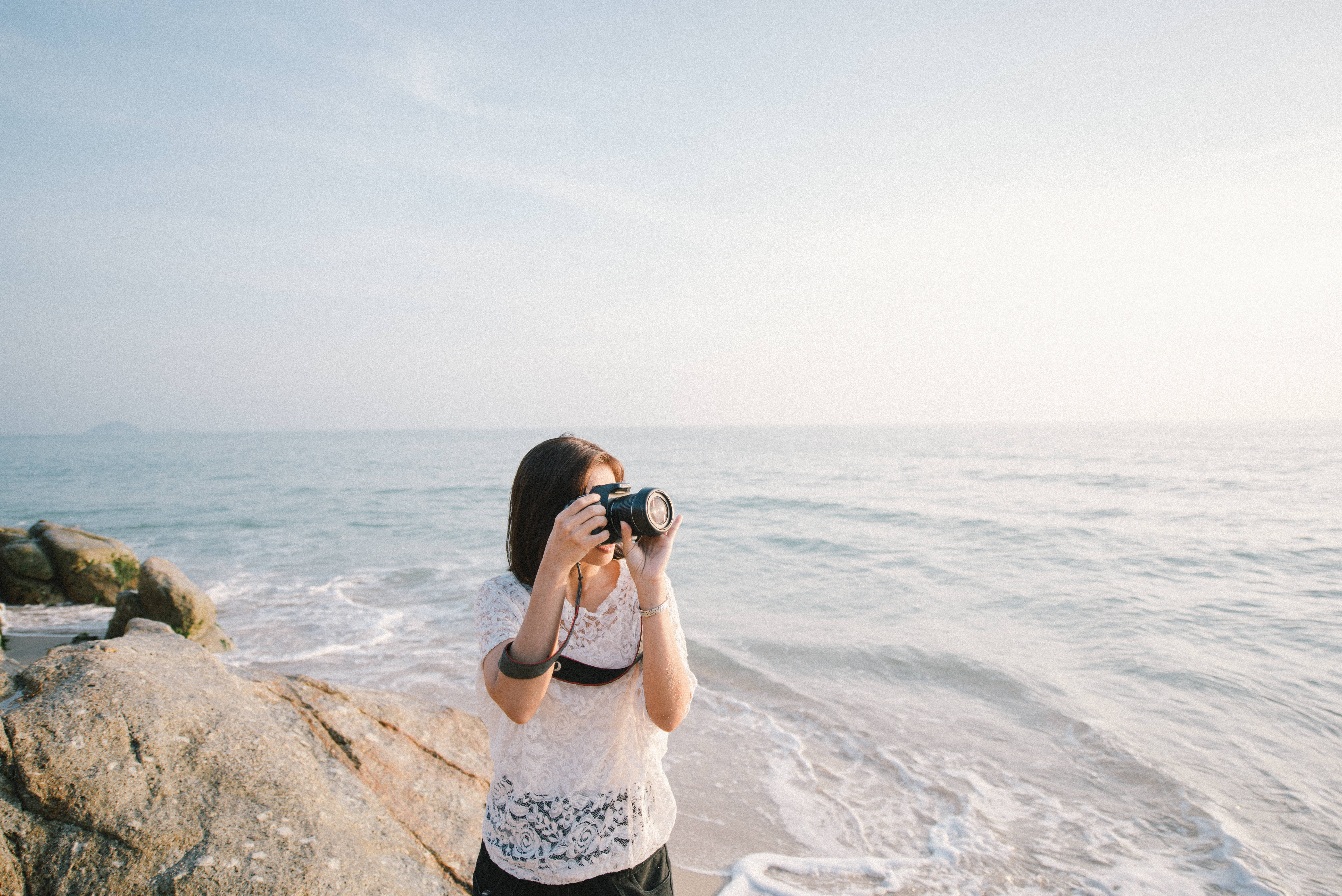Back button focus is a game-changing way to operate your camera.
It takes some time to get used to, but it solves so many problems that you may encounter when shooting. This is why most pros that I know would argue that it’s worth it. In the above video, pro photographer and CreativeLive instructor, Mike Hagen demonstrates the how, what, and why of this incredible focusing approach.
What is back button focus?
Back button focus is a shooting technique that separates the normal function of the shutter release — focusing and shooting — into their own individual controls.
But I’m focusing just fine, you say, why do I need back button focus? Back button focusing isn’t about getting sharper shots (though it can prevent focusing errors), it’s about efficiency. It’s about seamlessly swapping focus modes. It’s about effortlessly locking the focus.
Intrigued? Here’s what you need to know about back button focus and how to set it up on your camera.
What does back button focus do?
Under a camera’s default settings, pressing the shutter release halfway will focus the shot, while pressing the release all the way will take the photograph. Back button focus separates those two functions.
The shutter release keeps the task of taking the shot, while a button on the back, often the AF-ON or AE AF lock, tells the camera when to use the autofocus. Holding the back button continuously focuses, while pressing the button once focuses and then locks the focus.
Try new photography challenges to grow your skills and have fun. We dare you. Sign up for our Creative Photography Challenge today.

Back button focus aims to tackle a few shortfalls of traditional focusing methods, like the time it takes to switch between continuous and single focus modes.
Is back button focus difficult to learn?
Back button focus isn’t tough to learn, but it does require adjusting a few things in the camera menu and getting used to shooting with two fingers. So why are many photographers saying that back button focus was their “aha” moment?”
4 Reasons to Use Back Button Focus
There are a number of different reasons to use back button focusing, but they all come down to one big reason: efficiency. While back button focus can help you to avoid focusing errors, it doesn’t make your autofocus system capture sharper shots — but it does help you shoot more efficiently.
1. Back button focus allows you to easily swap between continuous and single autofocus
With back button autofocusing, holding the button down turns on the continuous autofocus. And when you don’t need the continuous focus, tapping the button once locks the focus in on still subjects. That means sports photographers can shoot the game and the sidelines without taking their eye off the viewfinder to adjust the focus mode.
2. Back button focus allows you to easily lock focus
While high-end DSLRs are getting more and more focus points, the center points are still the most accurate. Many photographers will use the central focus point to focus, then press the AE lock and adjust their composition. With back button, the focus is locked as soon as you take your finger from the button, so there are no extra buttons to keep the focus put.
Try new photography challenges to grow your skills and have fun. We dare you. Sign up for our Creative Photography Challenge today.

3. Back button focus helps prevent focus errors
Autofocus isn’t infallible — if an object moves in the foreground, for example, the autofocus is often thrown off. Using back button focus allows you to quickly prevent focus errors. For example, if you’re shooting a soccer game and a player moves in the foreground, you can release the back button to maintain the focus on your original subject.
4. Back button focus makes it easy to swap between auto and manual focus
On many lenses, you don’t have to flip the switch to manual focus if you are using the back button method. The autofocus quits when you release the button, so you simply need to twist the lens to adjust focus. That’s not possible when the button to take the photo also triggers the autofocus.
Back button focus is about efficiency and avoiding focus errors. The technique is most beneficial for shooting action, but there are a few other uses too. Photographers that frequently use the focus lock button, for example, often like the back button method. Macro photographers often set their camera to back button focus, then use smaller manual focus adjustments.
How to Set Up Back Button Focus On Your Camera?

The Photography Starter Kit for Beginners
By award-winning photographer, John Greengo
- Understand shutter speed, ISO and aperture and how they work together
- Utilize depth of field
- Learn to focus in manual mode
- Understand different types of lenses
- And much more
Setting up back button focus on your camera will inevitably be different depending on which camera model you have. Even within the same brand, they are all a little different. What’s the solution then? You could read your camera’s manual.
Wait, no, don’t do that. The paper manuals that come with your camera are notoriously terrible. Instead, CreativeLive has created a series of short video courses, specific to each camera model. They call them Fast Starts, and whatever camera model you have, there is a good chance that CreativeLive has created a course for it.
These video courses take you step by step through every button, feature, and menu item, enabling you to customize your settings exactly how you want for your style of shooting. The very first thing I did when I bought my Nikon D810, was watch the Fast Start course on how to set up so that I could customize my settings to my liking, AND to figure out how to set up back button focus.
Although I highly recommend watching the entire Fast Start course to know your camera inside and out, here are some basic instructions for how to set up back button focus on a few of the most popular camera brands:
Setting up Back Button Focus on a Nikon
Since the back button focusing method isn’t the traditional way of shooting, there are a few steps to telling your camera that you don’t want to focus on the shutter release. On a Nikon, first you need to set the focus mode to continuous, or AF-C. That allows the back button to focus continually when held down, and just once when pressed just once. (Most Nikon DSLRs have a button on the auto-to-manual focus switch towards the front left — hold this button and use the back control wheel to select AF-C).
Next, you need to tell the camera what button you want to use for focusing. On high-end Nikon DSLRs, there’s often a dedicated AF-ON button, but the AE AF Lock can also be used for back button focusing. To set the control, head into the menu, then Custom Settings then Controls. Set the control for the AF-ON or AE AF Lock to AF-ON.
Then, go back to the custom settings menu and select the autofocus submenu. Under AF C Priority Selection, select ‘Choose Release.’ This lets you take photos even if your autofocus point isn’t on the subject, such as when you lock the focus then recompose.
One last step — still inside the autofocus menu under custom settings, go to AF Activation and select AF-On only.
 Setting up Back Button Focus on a Canon
Setting up Back Button Focus on a Canon
Canon was actually the first to introduce the back button option in 1989, and that feature is available on all but the original digital EOS Rebel.
To set up back button focus on a Canon DSLR, locate the Custom Controls or C.Fn option in the menu (the wording varies depending on what model you are using), then select the shutter button/AF-On option.
Under this menu, two options will set up back button focus. The Metering Start/ Meter + AF Start option turns on back button focus and will continuously adjust the metering on programmed auto, shutter priority, and aperture priority modes. The AE Lock / Metering + AF Lock will lock the exposure in the first frame, while still using the back button focusing method.
Setting up Back Button Focus on a Sony Mirrorless
Sony’s mirrorless cameras, including the a7 line, also allow back button focus. Sony users need to adjust three settings inside the ‘Custom Settings’ menu to start using the feature. First, head to the Custom Key Settings, then the AEL button and select AF ON. Next, still inside the Custom Key Settings submenu, select AF/MF Button, then choose AF/MF Cntrl. Toggle.
Finally, inside the Custom Key Settings, choose AF W/ Shutter and select off. Once the back button focus is set up initially, users only need to turn that last step on and off to swap between back button and traditional focusing methods.
Back button focusing does take some getting used to, but many photographers prefer the method because of its efficiency. By separating the controls, photographers can easily adjust their focus methods between continuous and single and even autofocus and manual without taking their eye from the viewfinder.
Try new photography challenges to grow your skills and have fun. We dare you. Sign up for our Creative Photography Challenge today.


 Setting up Back Button Focus on a Canon
Setting up Back Button Focus on a Canon

